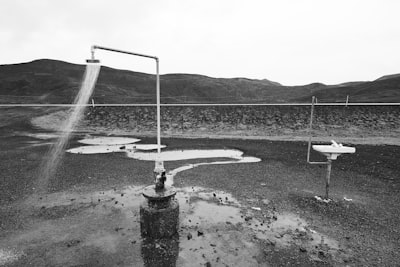Overview
Bitumen, a viscous black mixture of hydrocarbons obtained naturally or as a residue from petroleum distillation, is commonly used in roofing, road surfacing, and waterproofing. However, its presence in drinking water supply systems is a matter of public health concern due to potential contamination risks. Bitumen is banned for use in potable water pipes in many jurisdictions due to its potential to leach substances or particles into drinking water.
Properties and Uses of Bitumen
Bitumen possesses adhesive and waterproofing properties, making it useful in construction-related applications such as road surfacing and as a sealant. Its insolubility in water largely keeps it stable in most contexts where it is applied properly.
Causes of Bitumen Contamination in Water Supply
Contamination of water supplies with bitumen can occur primarily through:
- Deterioration of outdated or substandard water pipes that were coated or sealed with bituminous materials in past construction practices.
- Accidental introduction during construction or maintenance activities where bitumen-based materials are still present nearby.
- Improper disposal or runoff from roadworks or waterproofing projects, which may reach water sources in rare circumstances.
Health and Regulatory Concerns
While small particles of bitumen may not pose an immediate acute health threat at low concentrations, its by-products or associated compounds, such as polycyclic aromatic hydrocarbons (PAHs), are considered potentially harmful with prolonged or high-level exposure. In response, health authorities in many countries prohibit or tightly regulate the use of bitumen in connection with drinking water systems. The World Health Organization (WHO) and various national bodies provide guidelines on acceptable drinking water materials.
Detection and Mitigation
Detection of bitumen contamination typically involves water quality testing, visual inspection for discoloration or particles, and chemical analyses for PAHs and other hydrocarbons. When contamination is found, typical responses include:
- Providing alternative water supplies (e.g., temporary water tanks)
- Flushing pipes and water systems
- Replacing affected pipe sections with approved materials
- Regular monitoring and public health advisories
Recent Notable Incidents
In recent years, several incidents have highlighted the risk, most notably in new or upgraded public housing developments in urban areas where old infrastructure was repurposed or improperly refurbished. These cases often prompt reviews of water safety standards and construction oversight.
Conclusion
The presence of bitumen in drinking water highlights the importance of stringent regulatory enforcement and monitoring of water supply infrastructure. Awareness of historical construction practices and modern standards is essential for ensuring safe drinking water in urban and residential environments.

Comments
No comments yet. Be the first to comment!